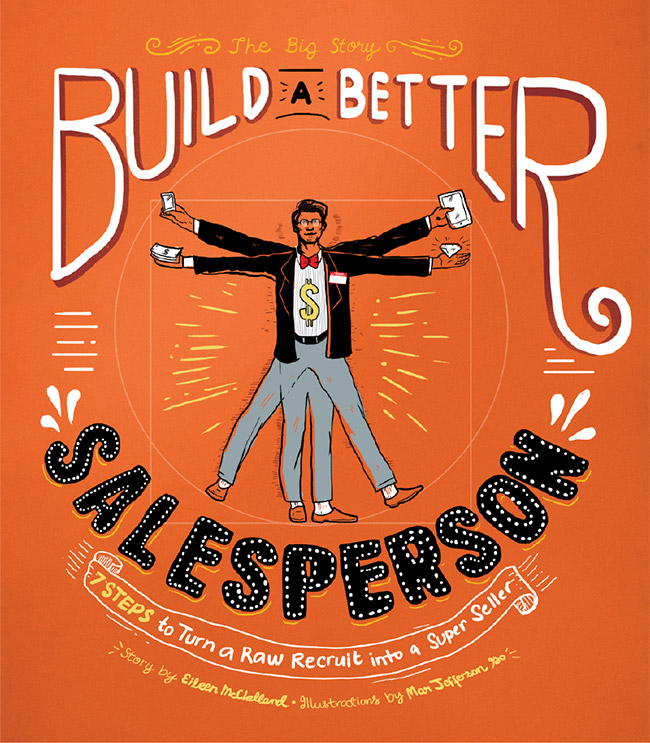
WHAT’S SO DIFFICULT about selling jewelry? “You could have all the product training in the world and there is still an art in getting the merchandise to move the last 18 inches across the counter,” says Steve Jaffe, store manager and diamond buyer for the Bernie Robbins Jewelers flagship store in Somers Point, NJ. “The business grows based on new clients and how you cultivate them. It’s critical that you handle clients the right way and make them feel you have their best interest at heart.”
Clearly, something so important to your business can’t be left to chance. To succeed, you must teach professionalism, finesse and product knowledge at every turn. When your staff is more knowledgeable than your customers, your staff exudes confidence and, in turn, customers have more confidence in your business.
If you do have an opening in sales, take time to both hire and train — and don’t expect instant results. While we set out to write a story with the theme of turning a raw recruit into a sales superstar in six months, we learned that six months is pushing it. Give it a year before you see results. Joel Hassler of Rasmussen Diamonds says the key to successful training and the reason it is a gradual process is that you should be “building a better relationship builder, not a better salesperson.”
Jaffe says that the first year in a new store is challenging even for experienced sales consultants, who are relegated to picking up new business as it walks in the door. “The best sales consultants are the best because they have, over time, established a clientele,” he says. Obviously, that takes time. “But at a year they should be at a point where they are making their goal or approaching making their goal,” Jaffe says. “If not, then there is a serious issue.”
Don’t set the first year goal too low, says Shane Decker of Ex-Sell-Ence. “Usually, their first year performance should be about one-third of your highest volume salesperson. If you have someone writing $1 million a year, a first year salesperson will usually sell about $300,000.”
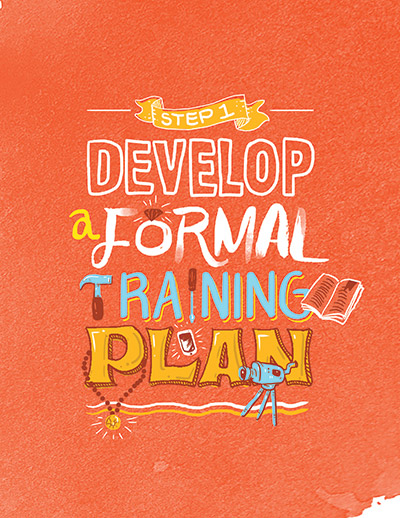
Recognizing the challenge of sales training, Bernie Robbins Jewelers has recently contracted with the company Selling Fundamentals & Consulting to establish a formal and mandatory training program for sales staff. It includes multiple in-store visits by a trainer, half-day training sessions off site and a daily online component. The focus is on how best to take care of clients, to find out what their needs are and to ultimately close those sales. Beyond that, Bernie Robbins has instituted tracking to determine which and how many customers are being sold, and how many people return for a second or third visit before they are sold. The goal of tracking is to figure out how successfully sales consultants are engaging with customers, Jaffe says.
This can be done using specialty software or the low-tech way, with paper and pen. After working with each customer, ask each salesperson to fill out a form. Find out whether they closed the sale, if they attempted an add-on, if they presented a “wow” item, if they used team selling or if they “walked” them. Use this information to identify areas in which to help your staff members improve, says Shane Decker. In many independent jewelry stores, all training falls to the owner or manager. But lean staffing doesn’tmean it’s a good idea to shirk the responsibility.
Advertisement
Time-crunched retailers do devise creative methods of imparting their knowledge:
- Invest your own time in your new employee, says Robert Scott of Robert’s Jewelers in Southold, NY. “I spend time before and after hours (paid) to bring a new hire along in a shorter time. I cover policy, attitude, phone presence, simple daily tasks, repair take-in and product knowledge.”
- Jeremy Shea Leech’s training program in Abilene, TX, focuses on studying David Geller’s price book on selling repairs, Shane Decker’s sales training DVDs and workbook, and Harry Friedman’s training materials. He also has newbies shadow him for the first two weeks.
- Michael Derby of D3 Diamonds and Fine Jewelry likes the secret shopping method: “I want to make sure they understand what it is like to be a customer and receive both good and bad service,” he says. “So I make them go out and shop other luxury brands and get a sense of what is and is not acceptable.”
- “I cut out pictures of pieces from different magazines and then challenge my staff to find the closest piece from one of our vendors in less than 10 minutes,” says Elysia Demers of Barnhardt Jewelers in Spencer, NC. “Then we see what possibilities there are to modify the look for different budgets. Seeing that sometimes there are several options to meet the customer’s needs enhances our experience as salespeople to think outside the box.
- Pretend it’s a professional sport. “Video and audio tape their sales performance, then review the tapes in a peer review. Just like they do in golf. Show and discuss what sticks, what misses, and why,” says Andrea Riso of Talisman Collection in El Dorado Hills, CA.
- Ray Lantz, store manager for Lantz Diamond Center in Claremont, CA, says he learned from Hearts On Fire to make sure every employee knows the basics about each new line and is prepared to launch into a short presentation at a moment’s notice — “A simple two-minute drill that everyone knows and can communicate quickly, so that it’s kind of in your back pocket when you need it.”
TRAINING TOOLS
Retailers who responded to INSTORE’s Big Survey in October 2015 reported using the following training tools:
Outside Reading Assignments
Hiring and Training Tips
Test their resiliency. Salespeople need to be able to handle rejection. So when Rob Rawson hires salespeople for his remote staffing company, Staff.com, he starts by turning them down. After initial interviews, Rawson calls the candidates he wants to hire and tells them he doesn’t think they have what it takes. About 75 percent of applicants accept the rejection outright or become overly defensive — and thereby fail the test. On the other hand, the 25 percent who fight to make their case tend to be golden, he told Inc.com.
Interview prospects on the sales floor. When you conduct an interview, consider doing it in a corner of the sales floor, rather than in a quiet office, says Kate Peterson of Performance Concepts. Most retailers acknowledge it’s very important for a sales person to focus on a customer while being aware of what’s going on around them. Interviewing candidates on the sales floor lets you see how they react one on one amid distractions. It’s kind of a clinical trial, as compared to a laboratory experiment.
Arm your staff with technology. Tablets can be more than a visual aid for Gen Y. They can give sales associates nearly infinite information about customers and products, easing the learning curve, according to “The Future of Shopping” in the Harvard Business Review. Information on tablets can describe the way customers like to be treated, what they’ve bought in the past and what’s on their wish list. It can change pricing and promotions accurately and instantaneously. It can provide customized recommendations and connect them with friends who may offer their opinions. Hand-held technology can eliminate checkout lines, capture transaction receipts, file rebate claims and speed returns.
Learn something yourself. The next time you take on a new hire, ask her to jot down every doubt she has about the way things are done at your store during her first month. For most things, the newbie will come to understand why your store does them in a certain way, says former Saks CEO Stephen Sadove. “But invariably, I find some really good ideas that make you say: ‘Why are we doing it this way?’ I’ve seen little things, big things, waste in the system, and a lot of duplication come out of it,” he told the New York Times.
Role-play for wardrobing. Cut out ads from fashion magazines and role-play with your sales associates, suggests the American Gem Trade Association. Typically, these ads feature new or trend-driven designs, so the colors of the outfits should be representative of the clothing your clients will be wearing. Ask your associates to identify the jewelry in your store that best complements the outfit featured in the ad, then discuss why they would give that advice based on fashion trends, color trends or personal style.
Never on Monday. In Y-Size Your Business: How Gen Y Employees Can Save You Money and Grow Your Business, Jason Ryan Dorsey cautions against starting a new hire on a Monday. It’s better to ask them to come in mid-day and midweek, so you will be less likely to be dealing with an early morning crisis that needs to be resolved.
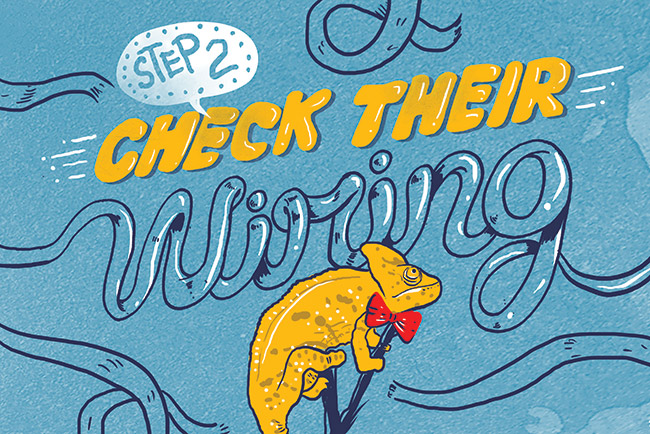
Make sure you hire a true salesperson, who has the correct wiring and appropriate traits to benefit from your sales training plan.
Kate Peterson of Performance Concepts says that finding people who are flexible and can see the big picture — who have “the right wiring,” for your company culture — can be more important than having years of experience. “There’s no magic bullet,” she says. “This is really a matter of knowing what you are looking for and identifying the skills that are most critical.”
Sherry Smith, business mentor for The Edge Retail Academy, says research shows the best salespeople are ego resilient (they can hear “no” and bounce right back), driven and competitive (they want to close that deal) and empathetic (they listen well).

“If you don’t have those things to begin with, I don’t care what you do for training, you will not turn them into top performers,” Smith says. “But if they’ve got the wiring you can train product knowledge.”
Mary Jo Chanski of Hannoush Jewelers in Rutland, VT, says the salesperson must be or must learn to be a chameleon. “You need to focus on what they are saying, and what they aren’t saying. I learned my best sales skills from bartending. You need to be able to change into whatever kind of person they feel comfortable with…within seconds. It’s hard. Not just anyone has this super power!”
Gary Youngberg of Ames Silversmithing in Ames, IA, says the top sellers in his store simply have the gift of gab — they know how to make conversation. “In our store, it’s not about selling — it’s tell a story, educate the customer, talk about Mrs. Smith’s son’s soccer game, and the sale will take care of itself,” Youngberg says.
Daniel Pink, author of Drive and To Sell Is Human, writes that contrary to popular assumption, extroverts don’t make the best salespeople. Instead, studies have shown that ambiverts, people who fall in the middle of the extrovert/introvert spectrum, are most effective at moving others because they have better listening skills.
Make sure, too, that the candidate has a deep interest in the product itself, or the potential to develop such an interest, Pink says.
“The idea that there are people who can just sell anything — computers to Winnebagos to diamond rings — is washing away,” Pink says. “There is a lot to be said for conviction and expertise.”
But wishing and hoping that the perfect enthusiastic, motivated conversationalist with a passionate fascination for diamonds will miraculously apply for your next opening may not be realistic.
The job of sales associate was identified by 41 percent of respondents to the INSTORE October 2015 Big Survey as the hardest staff position to fill with qualified people.
Jaffe says Bernie Robbins tries to hire people who have prior jewelry sales experience or prior luxury sales experience, and who are well-spoken.
Advertisement
Rita Wade of Wade Designs Jewelry of Rocky Mount, NC, however, believes it’s possible to find “great people everywhere you go.”
“I was in a Panera recently and I wasn’t really familiar with the menu,” Wade says. “The woman behind the counter began asking me what type of meats I liked and began the process of suggestive selling. I thought, wow, I would hire this girl! She would understand that sometimes when we walk in a store, we know we need a gift; we just don’t always know what exactly we need.”
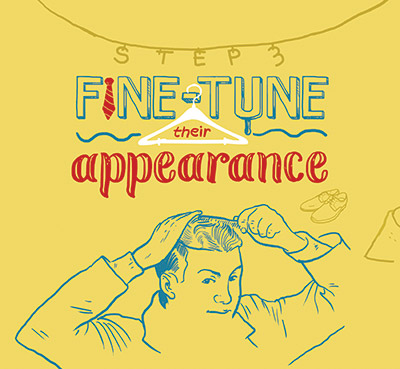
Yes, your sales staff’s appearance must align with your culture, but if everyone in your store is dressed very formally, it may be time to consider easing up a bit.
“Your culture has to be a little bit evolving,” Smith says. “The world as a whole is more casual. We do sell luxury goods but we want our consumers to be able to relate to the sales staff.”
Smith says while the traditional dress code in jewelry stores has been professional and upscale, it’s OK in most markets — and even desirable — to encourage a bit of diversity, in an effort to set younger shoppers at ease. “Millennials are different,” she says. “They have more tattoos, more piercings.”
Shane Decker of Ex-Sell-Ence says it’s important that dress codes meet customer expectations.
“In Florida, when people get off a cruise ship, they don’t expect you to have on a suit,” Decker says. “But in New York or downtown Chicago, or if you have a store that is in the luxury goods business, they don’t expect you to be selling in blue jeans. In these cases, customers expect men to be wearing suits and ties and ladies to be wearing dresses.”
Even so, Decker sees the need for hiring a 20-something sales associate or two who dresses more casually.
“A lot of young people don’t want to go into stores because they don’t want to put up with an attitude,” Decker says. “They’re also tired of being pre-judged, if they have piercings and tattoos and wear different clothes than we do. So what do you do? Hire a 27-year-old who dresses like them, who is really smart and who will know more than anyone else in the store knows within a year.”
At Bernie Robbins stores in New Jersey and Pennsylvania, the dress code still bans visible tattoos and “irregular piercings,” but the company is making the move away from formal business attire toward casual, stylish chic.
Style expert Michael O’Connor says that although consistency in dress may look polished, encouraging sales staff to display a variety of styles rather than a uniform look may appeal to a wider cross-section of clients. O’Connor suggests letting staff members play to their stylistic strengths so each customer can seek out a sales professional dressed in the manner he finds most approachable.
First, figure out to whom you are selling. The average 27-year-old bridal shopper may gravitate toward the father figure in a suit and tie or he may be more comfortable chatting with a younger guy who dresses more like he does — say, dark, fashionable jeans and a collared shirt.
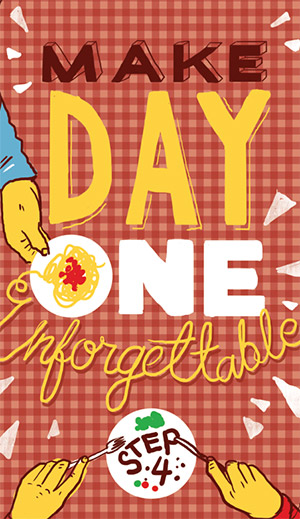
Day 1: “That first impression is everlasting,” says Sherry Smith of The Edge Retail Academy. What kind of impression are you and your business making to new employees on their first day of work?
Whatever you do, don’t let them sit around and wonder why they are there. Make sure they’re greeted by key people and equip them with an employee handbook, at the very least. Explain company policies and how you do business.
“Day 1 on a new job is like being a baby again no matter how seasoned you are,” Jaffe says. “You have to learn what the new employer expects.”
At Lee Michaels, employees begin the “onboarding” process on Day 1. They receive a workbook, basic information about the company and learn talking points for merchandise.
Whatever you do, don’t throw new employees onto the sales floor on Day 1 — don’t “put them out there with the wolves immediately,” as Rita Wade of Wade Designs Jewelry in Rocky Mount, NC, puts it. Even if they have experience, that doesn’t mean they know your culture or how you handle things. “It just sets them up for failure,” Wade says.
Make the first day special. Order in lunch, suggests Andrea Hill, author of The How-to-Hire Handbook For Small Business Owners. “This makes the day special for everyone, and eating together is an important form of social glue.”
It’s particularly important to capture a millennial employee’s interest by making Day 1 unforgettable, says Jason Ryan Dorsey, author of Y-Size Your Business: How Gen Y Employees Can Save You Money and Grow Your Business, because as a rule, members of this generation decide very quickly whether they like almost anything.
It’s important that the new hire feels genuinely welcomed by colleagues, gains an introduction to the company’s culture and her role within the organization, and makes a personal connection with at least one leader.
Simple things — such as having business cards ready for them on their first day — make a strong impression on this generation.
“Anything you can do that creates an emotional connection between a Gen Y’er and your company on the first day will make the experience unforgettable,” Dorsey explains.
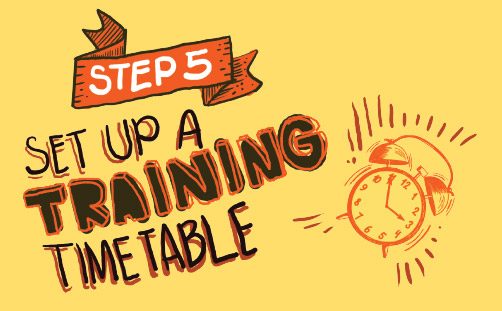
Day 2 to Day 10: Use a 10-day checklist to ensure your new hire is learning everything relevant on a day-to-day basis; essential things like how to check in a repair or ring up a sale on the POS. (Don’t rely on your memory during the onboarding process. Something important might slip through the cracks.) Training must be interactive for best results. “When you’re teaching a new employee, demonstrate how the task is done, ask them if they understand, and then have them show you how it’s done,” Smith says. “The last step is essential to check on whether they learned it, learned part of it, or just didn’t get it yet.”
Day 10 to Day 20: After the 10-day introduction, ask your new employee to shadow one of your best performers for 10 days, says Wade. “Shadowing experienced salespeople is one of the best ways for a recruit to learn about the product and see what does and doesn’t work with different customers,” says Casey Gallant of Stephen Gallant Jewelers in Orleans, MA. “Then discuss the sale afterward.”
Six weeks to six months: Set an educational goal or offer formal training in-house. Sales staff at Lee Michaels begin taking courses toward the Accredited Jewelry Professional diploma. They also visit the company’s training center for courses on the company, its history and its culture.
Six months to 12 months: The fruits of your labors should start to pay off. Richard Wilson of Wilson Diamonds in Provo, UT, says it is at this point, that a newbie is allowed on his sales floor. But first they must pass a test that includes 20 key role-playing situations.
12 to 18 months: New recruits at Lee Michaels attend its “Graduate University,” where they learn more about time management and advanced sales.

Training shouldn’t cease after the first year.
By 24 months, Lee Michaels employees are expected to complete the Registered Jeweler program. All employees attend weekly meetings and specialized training sessions. As staff members develop skills and demonstrate their strengths, they are routed in career-development channels — either as sales professionals or as managers. Each career path includes additional, targeted training. Completion of courses is also a key part of the review process.
Bernie Robbins pays for its staff to take classes at GIA and invites brand representatives in for training.
In INSTORE’s 2015 Big Survey, 14 percent of respondents said they never conduct sales meetings and another 23 percent meet less often than once a month.
Whether you make time for a formal sales meeting or not, it’s crucial to provide ongoing product knowledge. Assign something new every week and ask staff to spend several hours a week in the break room or an office studying the information.
Then, follow up!
“There has to be engagement,” Smith says. “Say, ‘Tell me what you learned, what stuck out to you.’” Keep a product binder for each line that you carry and invite brand representatives to be speakers during staff meetings, too.
Eric Olsen of Chisholm’s Jewelry in Lander, WY, reinforces product knowledge by encouraging hands-on experience with the jewelry. “Make sure they are familiar with all of the jewelry by picking each piece up and either redisplaying it or cleaning it,” Olsen says. “Knowing where the merchandise is in the store is the best place to start.”
If you have a new hire who is proficient in sales in another area, it can still take as long as a year for them to become confident in product knowledge. To cultivate that knowledge and confidence, sign them up for a class with the GIA, Jewelers of America or Diamond Council of America, Smith suggests.
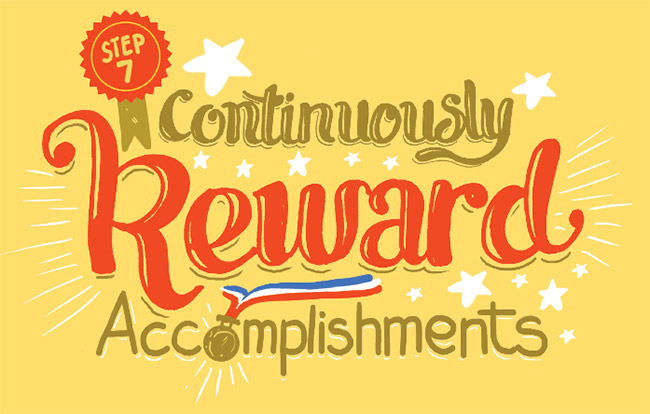
Start by writing a few handwritten, specific thank-you notes at the end of the day, write Adrian Gostick and Chester Elton in The Carrot Principle, a book based on a 10-year study of 200,000 managers and employees.
Call your employees togethe once a week and present an award to someone who has gone above and beyond. You’ll find the celebration of one success launches a thousand more. It works like this: You notice and reward staff’s actions that further your goals and their own. Employees are recognized and see their peers receive recognition. People focus more intently on the behaviors that bring rewards, the very behaviors that are most important to your organization.
“The best advice for cultivating a top seller is to have confidence in them,” says Morgan Bartel of Susann’s Custom Jewelers in Corpus Christi, TX. “Teach them what they need to know and allow them the space to actually cultivate their own techniques and approach. Remember that a good sales team is comprised of various sales styles. Nobody wants to shop with a store that is robotic and rehearsed.” It’s also important to foster an ownership attitude in your staff.
“Let your employees be a part of the buying process,” Gallant says. “Ask their opinion between two semi-mounts. When an employee feels a sense of ‘ownership’ over an item they can be more motivated to sell it and have more pride when they do.”